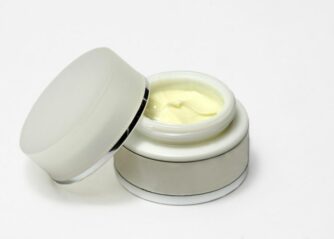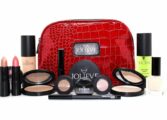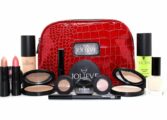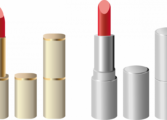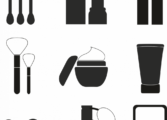Foundation Rosacea: A Comprehensive Guide for Food Enthusiasts

[ tag]
Introduction:

Rosacea is a chronic skin condition that affects millions of people worldwide. Characterized by redness, flushing, and in some cases, the appearance of small bumps, rosacea can significantly impact one’s self-esteem and quality of life. Due to its visible nature, individuals with rosacea often seek ways to minimize its appearance, including the use of foundation. In this article, we will provide an in-depth analysis of foundation rosacea, including its types, popularity, quantitative measurements, differences, and historical perspectives on their pros and cons. Let’s dive in!
[ Foundation Rosacea – A Comprehensive Overview]
Foundation rosacea refers to the specific type of foundation formulated to address the unique needs of individuals with rosacea. Unlike regular foundation, which focuses primarily on coverage and color correction, foundation rosacea aims to provide effective coverage while also calming and soothing the skin. It is specially designed to counteract the redness and inflammation associated with rosacea.
[ Varieties and Popularity of Foundation Rosacea]
Foundation rosacea comes in various types, catering to different skin tones, concerns, and preferences. Some popular categories include:
1. Mineral-Based Foundation: These foundations contain minerals such as titanium dioxide and zinc oxide, known for their calming properties. They offer a natural finish and are suitable for sensitive skin.
2. Green-Toned Foundations: These foundations utilize green pigments to neutralize redness effectively. They provide medium to full coverage and are often preferred by those with more pronounced redness.
3. Silicone-Based Foundations: Silicone-based foundations create a smooth, even surface on the skin, minimizing the appearance of redness and bumps. They are lightweight and offer long-lasting coverage.
4. Lightweight Tinted Moisturizers: Tinted moisturizers with SPF offer a sheer, natural coverage suitable for those with mild rosacea. They provide hydration while adding a touch of color to the skin.
[ Quantitative Measurements of Foundation Rosacea]
Measuring the performance of foundation rosacea involves considering factors such as coverage, longevity, ingredients, and suitability for different skin types. Some quantitative measurements include:
1. Coverage Scale: Foundations can be categorized as light, medium, or full coverage, depending on their ability to conceal redness. This scale allows individuals to choose the level of coverage according to their specific needs.
2. Wear Time: The longevity of foundation rosacea varies, with some lasting for a few hours and others providing all-day coverage. Quantifying wear time helps individuals select a foundation that suits their lifestyle and desired level of longevity.
3. SPF Factor: Many foundation rosacea products incorporate sun protection, offering varying SPF levels. Quantitative analysis allows individuals to select foundations with adequate sun protection for their daily activities.
[ Differences in Foundation Rosacea]
Foundation rosacea products may differ in several aspects, including texture, finish, and ingredients. These differences contribute to their suitability for different skin types and individual preferences. Key variations include:
1. Texture: Foundations may have a creamy, liquid, or powder texture. The choice of texture depends on personal preference and skin type. Creamy foundations offer more hydration, while powders tend to provide a matte finish.
2. Finis Foundations can have a dewy, natural, or matte finish. A dewy finish adds radiance to the skin, while a matte finish helps minimize shine. The choice of finish often depends on skin type and desired look.
3. Ingredient Selection: Foundations may contain ingredients such as soothing botanical extracts, antioxidants, or fragrance. Different ingredient combinations cater to various skin concerns, such as sensitivity or anti-aging benefits.
[ Historical Perspectives on Foundation Rosacea]
Over the years, foundation rosacea has evolved to address the specific needs of individuals with rosacea. Historically, the advantages of foundation rosacea include:
1. Increased Awareness: With growing awareness about rosacea and its impact, foundation rosacea has gained prominence in the beauty industry. This increased awareness has led to more options and formulations catering to these specific needs.
2. Advanced Formulations: Foundation rosacea has undergone significant formulation advancements, incorporating ingredients that provide both coverage and skin-soothing benefits. These advancements contribute to improved effectiveness in concealing redness and calming flare-ups.
On the other hand, some historical challenges associated with foundation rosacea include:
1. Limited Shade Range: In the past, foundation rosacea products had a limited shade range, making it challenging for individuals with diverse skin tones to find suitable matches. However, recent years have seen a broader range of shades becoming available.
2. Trial and Error: Finding the right foundation rosacea product often involved trial and error, as not all formulations suited every individual’s unique skin type and concerns. However, with advancements in research and formulation, individuals now have more options to choose from.
Conclusion:
Foundation rosacea plays a significant role in helping individuals with rosacea feel more confident and comfortable in their skin. With its ability to provide coverage while addressing redness and inflammation, it has become a go-to solution for many. As the beauty industry continues to innovate and prioritize inclusivity, foundation rosacea products are likely to become even more diverse, catering to a wider range of skin tones and concerns. Whether you prefer mineral-based, green-toned, silicone-based, or lightweight tinted moisturizers, there’s a foundation rosacea product out there for everyone. Embrace the power of foundation rosacea and let your natural beauty shine through.

